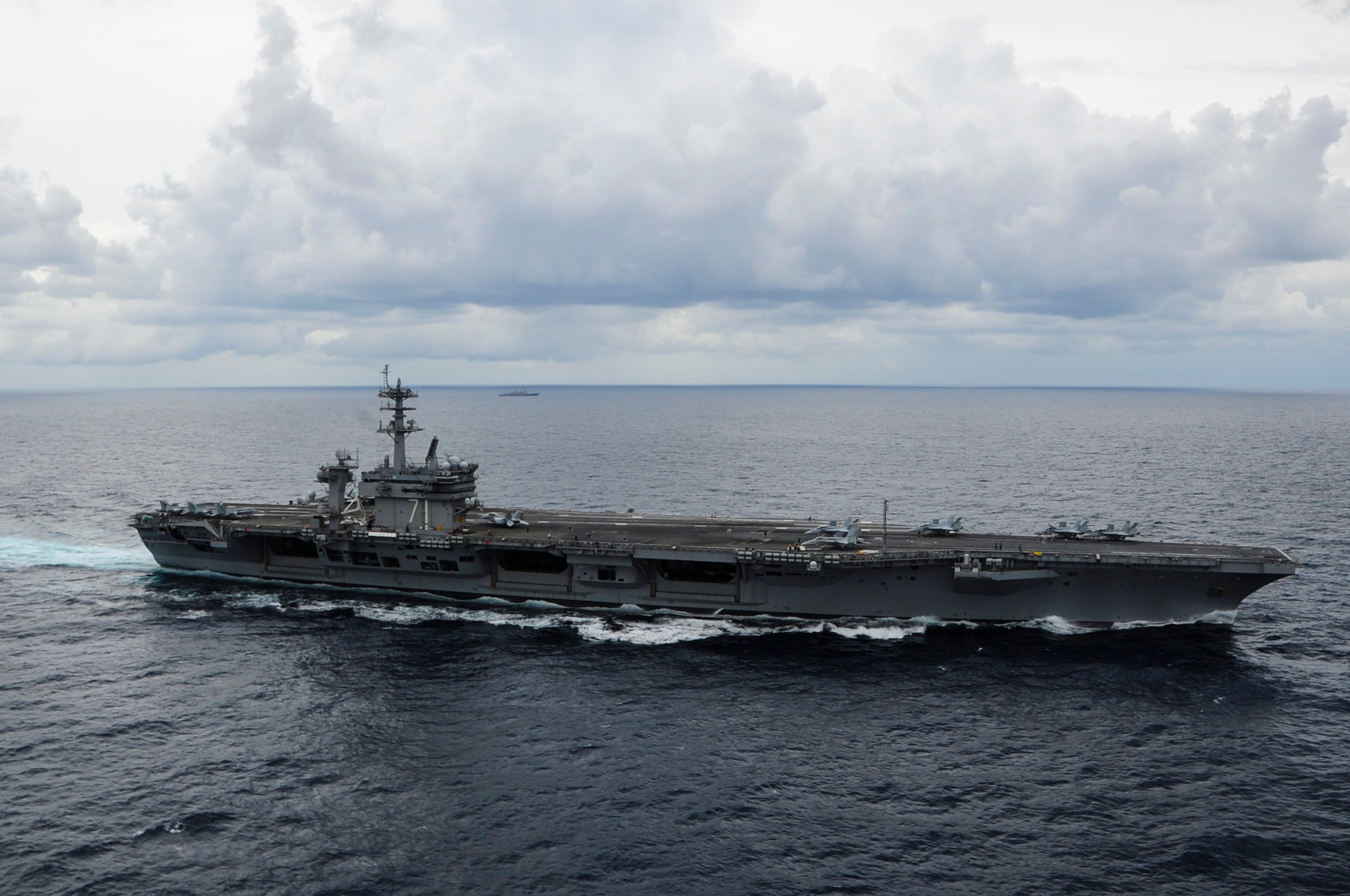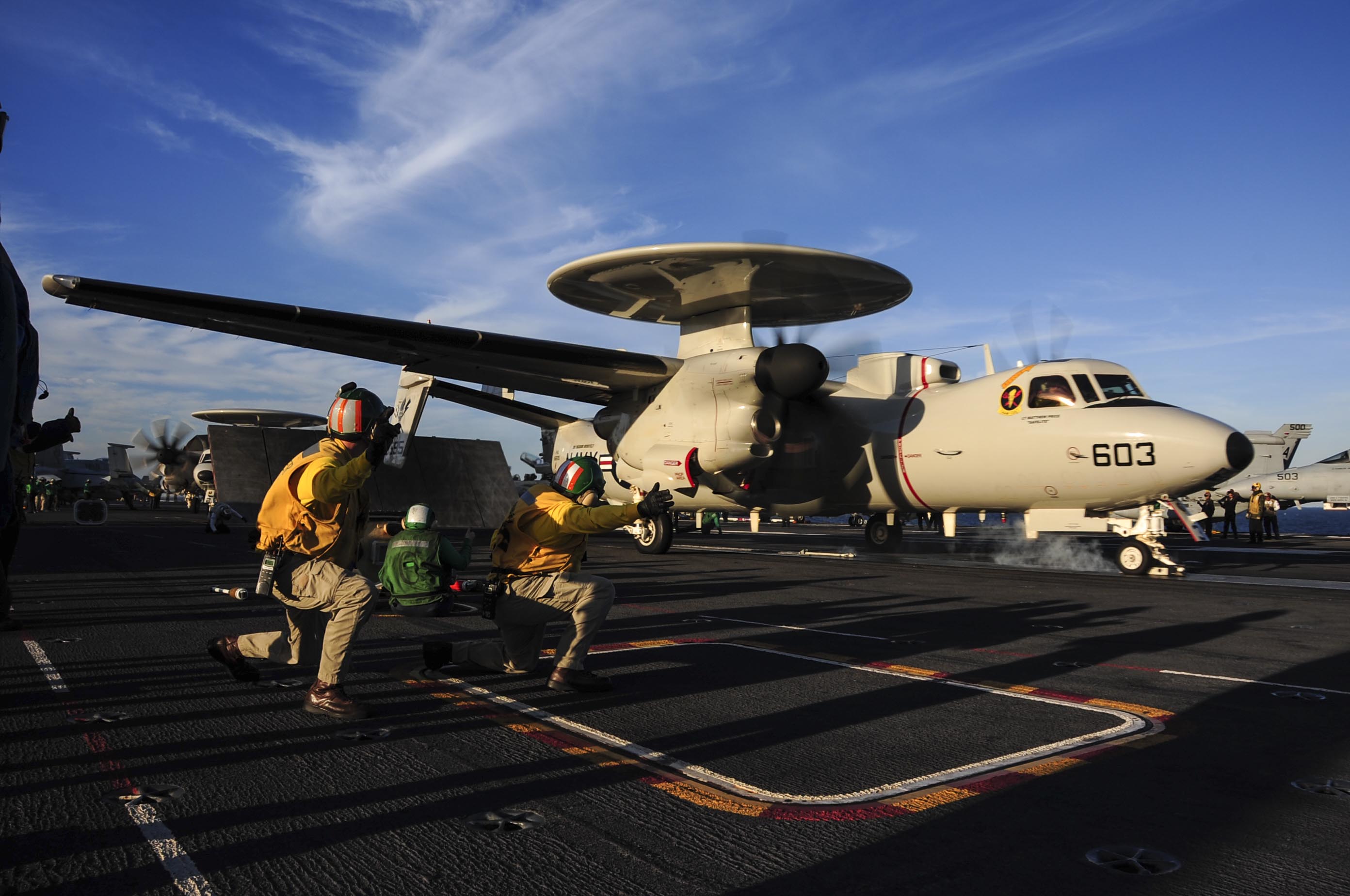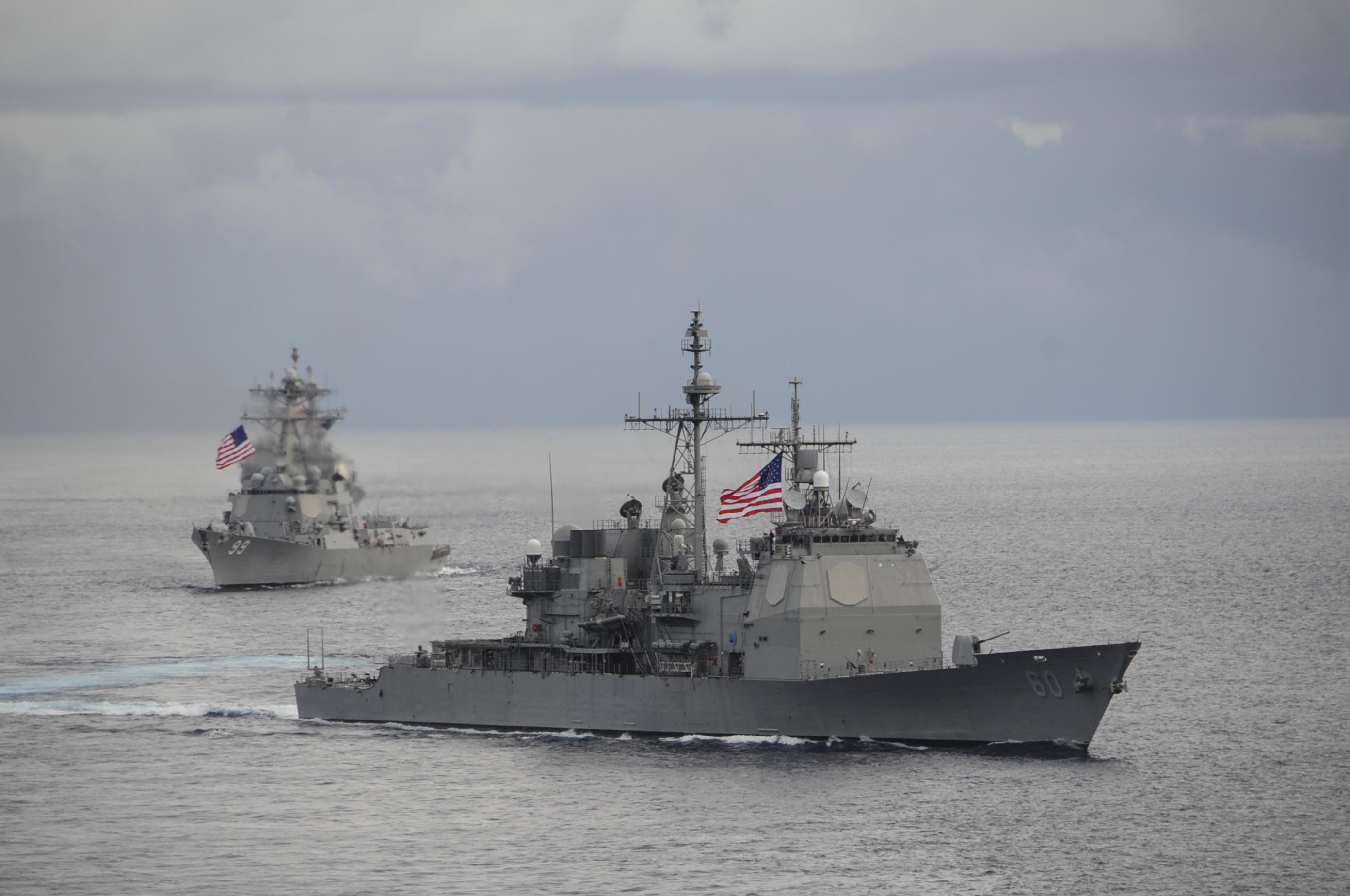
The U.S. Navy’s most technologically capable aircraft carrier left Naval Station Norfolk , Va. to start a series of exercises ahead of deployment later this year, the service announced last week.
USS Theodore Roosevelt (CVN-71) shipped out on Jan. 8 to begin its Composite Training Unit Exercise (COMPTUEX) with the ship’s of its carrier strike group (CSG) to test the ships’ crew and equipment against a variety of threats.
“[COMPTUEX] is designed to replicate real world combat scenarios that can potentially present themselves to our strike group at any time during a deployment,” said Capt. Scott F. Robertson, commanding officer of guided missile cruiser USS Normandy (CG-60), in a statement from the service.
“We are going to experience real combat situations from all angles, there will be training evaluations from a hostile ship boarding, submarine attacks, and enemy ships or vessels trying impede their justice upon our strike group.”

In addition to the upgraded Normandy, Roosevelt will field the first operational detachment of the new Northrop Grumman E-2D Advanced Hawkeye early warning aircraft as part of Carrier Airborne Early Warning Squadron VAW-125. The Navy declared initial operational capability (IOC) for the Advanced Hawkeye in October.
Roosevelt completed its four-year-long $2.6 billion refueling and complex overhaul (RCOH) in August. The RCOH — undertaken at Huntington Ingalls Industries’ Newport News, Va. shipyard — refueled the carrier’s two nuclear reactors and upgraded key systems onboard.

The upgrade included systems to make the carrier compatible with the service’s long developed Naval Integrated Fire Control-Counter Air (NIFC-CA) concept.
NIFC-CA ties the sensor systems of the upgraded Normandy and the E-2Ds to the carrier and assembles the information into a more complete air picture for the commander of the CSG.
The information is designed to provide target quality tracking information to other parts of the CSG to allow aircraft and ships to engage threats outside of an individual platforms sensor range.
For example, the E-2D could relay targeting information to a NIFC-CA capable surface ship and then the ship could fire a Raytheon Standard Missile 6 (SM-6) to attack a target well outside the range of the ship’s sensors.
The COMPUTEX is part of Roosevelt’s workups ahead of the CSG deployment scheduled for later this year.
In addition to Normandy, the CSG includes the guided-missile destroyers USS Forrest Sherman (DDG-98), USS Farragut (DDG-99) and USS Winston S. Churchill (DDG-81) and Carrier Air Wing (CVW) 1.





